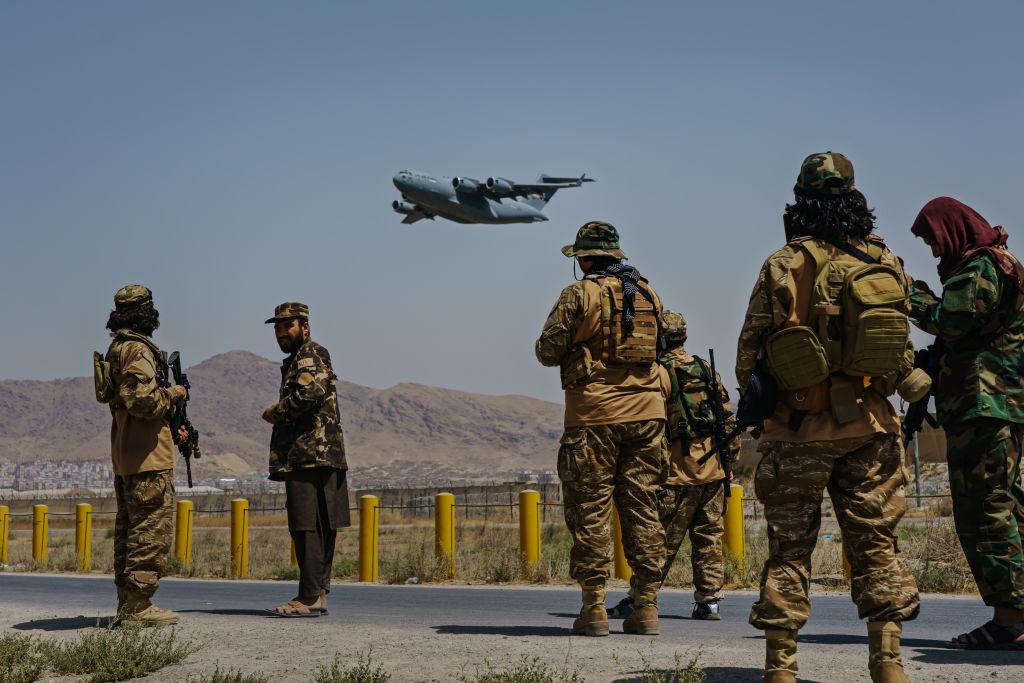
Why did the West’s Afghanistan policy fail so spectacularly? Was it doomed from the very beginning, and have any lessons been learned? More to the point, did the end of one 20-year war pave the way for another?
One year after the fall of Kabul and the Taliban’s return to power, these and other questions are hanging in the air. They remain unanswered, partly because Russia’s invasion of Ukraine and renewed Sino-American tensions have consumed much of the oxygen, but also because they are too painful to consider. It has been easier for the international community simply to forget about Afghanistan altogether.
Contrary to simplistic arguments one hears in the United States, the immediate reason for the Afghan regime’s collapse was not that Afghan soldiers didn’t want to fight for their country. In fact, tens of thousands had fought and died trying to stop the Taliban, only for the US suddenly to withdraw all political and material support for their fight. The regime collapsed because America had decided to get out, the consequences be damned.
As we have since learned (again) in Ukraine, an army’s ability to fight depends on the belief that victory is indeed possible, even if the odds are against it. Once the US had signalled its intention to withdraw completely from Afghanistan, it embarked on a rushed evacuation. In short order, the Afghan army lost access even to the repair and logistics personnel needed to maintain the complicated weapons systems that had been supplied to it. No wonder morale among Afghan troops collapsed. When the US cut and ran, Afghan soldiers took it as a signal to do the same.
The context for the US withdrawal had been shaped by the shameful deal that President Donald Trump struck with the Taliban in February 2020. With that, America indicated that it no longer cared whether there was a viable peace or political agreement in Afghanistan. It would leave no matter what, effectively abandoning the Afghan government.
When President Joe Biden took office, he decided to follow through on the Trump administration’s policy—against the advice of many. The US political system had become fed up with its own failures in Afghanistan. As the US Special Inspector General for Afghanistan Reconstruction noted in a devastating report that year, there had never been a 20-year plan for the country; instead, there had been 20 one-year plans. With every passing year, the US would announce a troop surge or some other tactic that was supposed to represent a turning point. Only rarely did US policymakers acknowledge that nation-building and peacemaking depend more on an abundance of patience than on a predominance of firepower.
Of course, we will never know whether a more coherent approach to Afghanistan would have produced a better outcome. For years, the thought of holding talks with the Taliban was unthinkable. By the time that finally began to change, the US had lost its strategic patience and was willing to accede to the Taliban’s core demand—that Western forces withdraw from the country—regardless of whether a political agreement was in place.
The inglorious endgame was foreseeable. The Taliban are back in control of the country, and any hope that they would govern more pragmatically than in the past has been dashed. Though Taliban leaders promised a more moderate approach upon their return, it soon became clear that they didn’t mean it. Once again, Afghan girls are being denied education. The economy has collapsed, food insecurity is rising sharply and the country has overtaken Yemen as the site of the world’s worst humanitarian crisis. Worst of all, very few people outside the region seem to care.
But make no mistake, the fall of Kabul last year had repercussions that have yet to be fully appreciated. It demonstrated that the US might not have the staying power or the strategic patience that’s necessary to achieve a military victory or ensure a lasting peace in countries where it has intervened. It showed that any other relatively marginal country or region might also be abandoned in the interest of focusing US resources on China.
The Kremlin certainly took note. Shortly after the Taliban’s takeover, Russian President Vladimir Putin’s national security adviser noted publicly that the Ukrainians could not rely on the US to stick around for the long term. Within weeks of the fall of Kabul, Russian troop trains and tank transports had begun their massive move towards the Ukrainian border. As one war ended, another began.